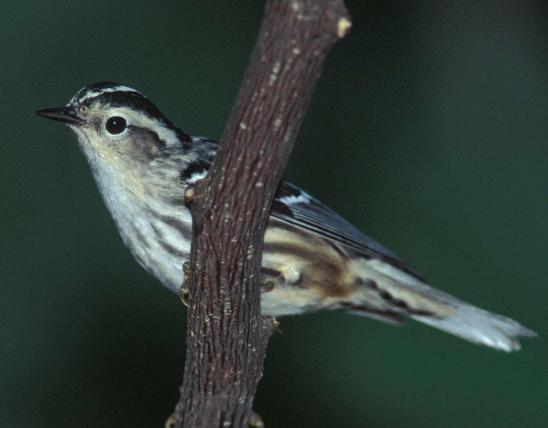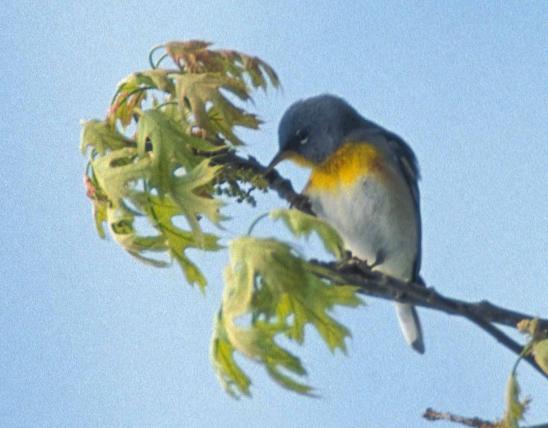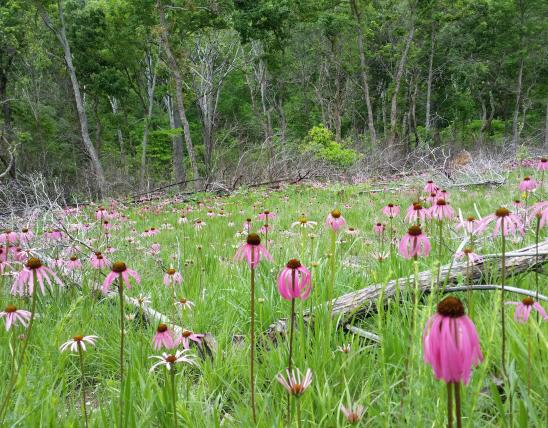
Cerulean warbler males are azure blue on the back and white on the belly. An identifying mark is a dark blue or black line across the throat. They have dark streaking on the flanks and back. Females are dull gray-blue above with a yellowish wash below. Both sexes have two white wingbars.
Juveniles are brownish gray above, with a pale center crown stripe and entirely white underparts. Cerulean warblers molt into an adult plumage prior to the breeding season following their hatching year.
Because the cerulean warbler often remains concealed in foliage high in the forest canopy, it is usually best identified its voice, a rapid series of buzzy notes on one pitch, with a rising "zeeeeee" at the end. The call is a sweet "chip."
Length: 4¾ inches (tip of bill to tip of tail); wingspan 7½ to 8 inches.
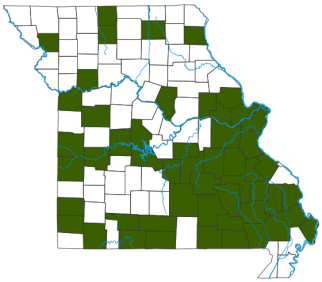
In central and south Missouri, and in two locations in Mercer and Grundy counties. In the spring, watch for cerulean warblers migrating through the Mississippi River Valley.
Habitat and Conservation
Cerulean warblers forage in bottomland and moist slope forests with uneven canopies of scattered large trees (sycamores, ashes, and oaks) and midsized understory trees (green ash and box elder). Their nests are built higher than those of other warblers. Because of its small population and significant declines, this species might soon be placed on the federal Endangered Species list. Conservation includes habitat preservation and improvement in the United States and South America.
Food
Cerulean warblers pick insects and other invertebrates from the bark of trees, using their efficient, pointy, tweezerlike bills. These warblers of the treetops catch flying insects and nest in tall elms, maples, and basswoods near water.
Status
A Missouri species of conservation concern, considered rare and imperiled in our state.
A summer resident, it is more common in the southeastern Ozarks but is rare elsewhere in the state. Its total numbers in the Western Hemisphere are small and declining, and for that reason our nation may soon classify it as endangered.
Life Cycle
After spending the winter in mountain forests of South America, in spring, they migrate to the central and northeastern US and into Canada, arriving in Missouri in mid-April. The compact, shallow nest is about 3 inches wide and made of shredded bark, spiderwebs, lichens, and mosses. Nests are 15-90 feet above the ground. The 3-5 eggs hatch in 12-13 days. Only the female incubates the eggs, but both sexes feed the young. Pairs raise a single brood and depart Missouri in September for the winter.
Human Connections
Its blue color makes it hard to see against the sky, providing a challenge to birders, who recognize it first for its distinctive buzzy voice, then hunt for it with binoculars. Seen or unseen, it spends its days snatching thousands of insects humans find bothersome.
Ecosystem Connections
Most warblers specialize in eating insects from the bark of tree trunks and branches. Like woodpeckers, these birds help check populations of wood-eating insects that might otherwise cause great harm to our forest trees.

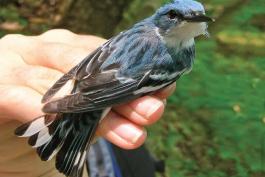
Where to See Species
About 350 species of birds are likely to be seen in Missouri, though nearly 400 have been recorded within our borders. Most people know a bird when they see one — it has feathers, wings, and a bill. Birds are warm-blooded, and most species can fly. Many migrate hundreds or thousands of miles. Birds lay hard-shelled eggs (often in a nest), and the parents care for the young. Many communicate with songs and calls.






















